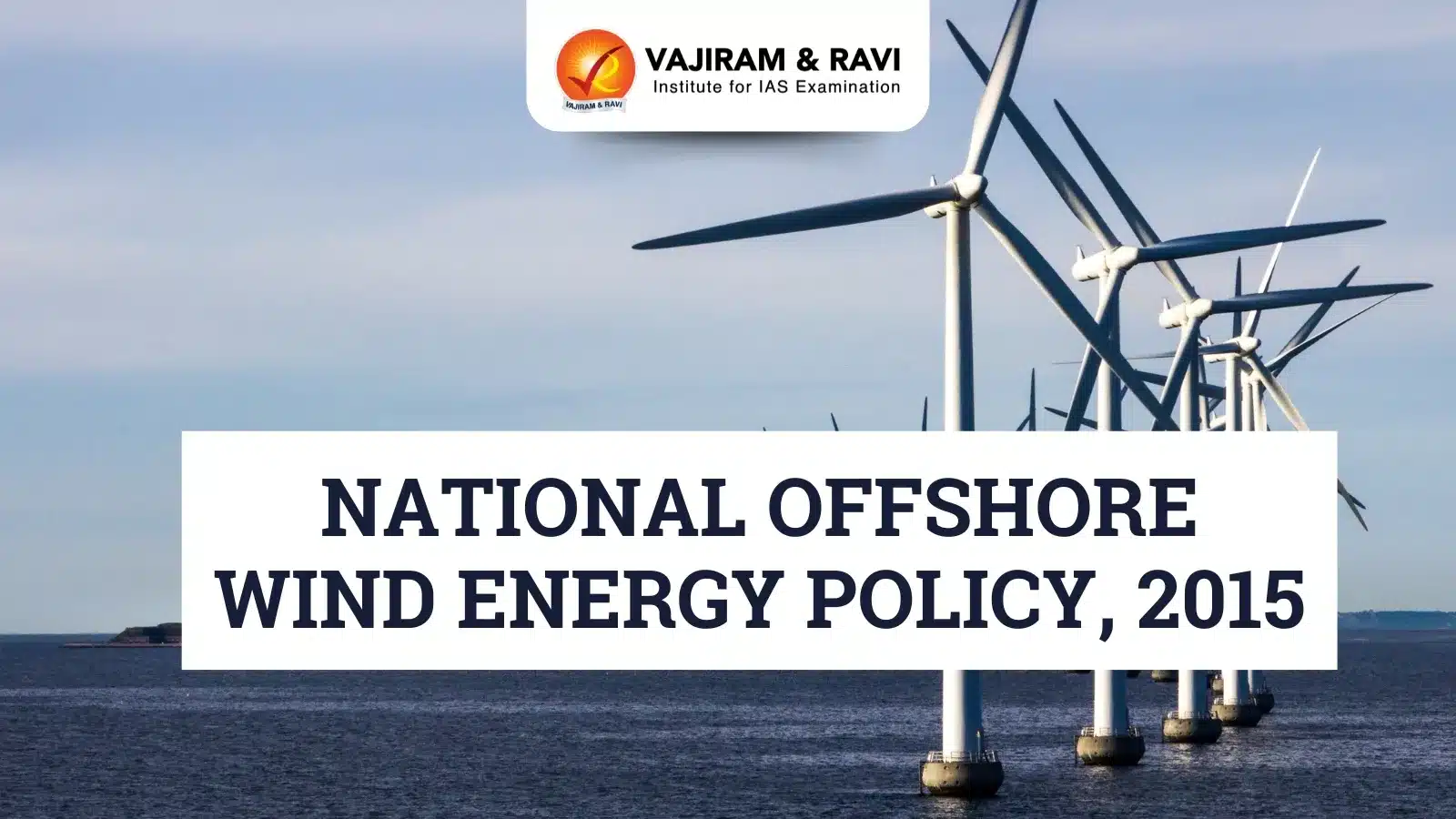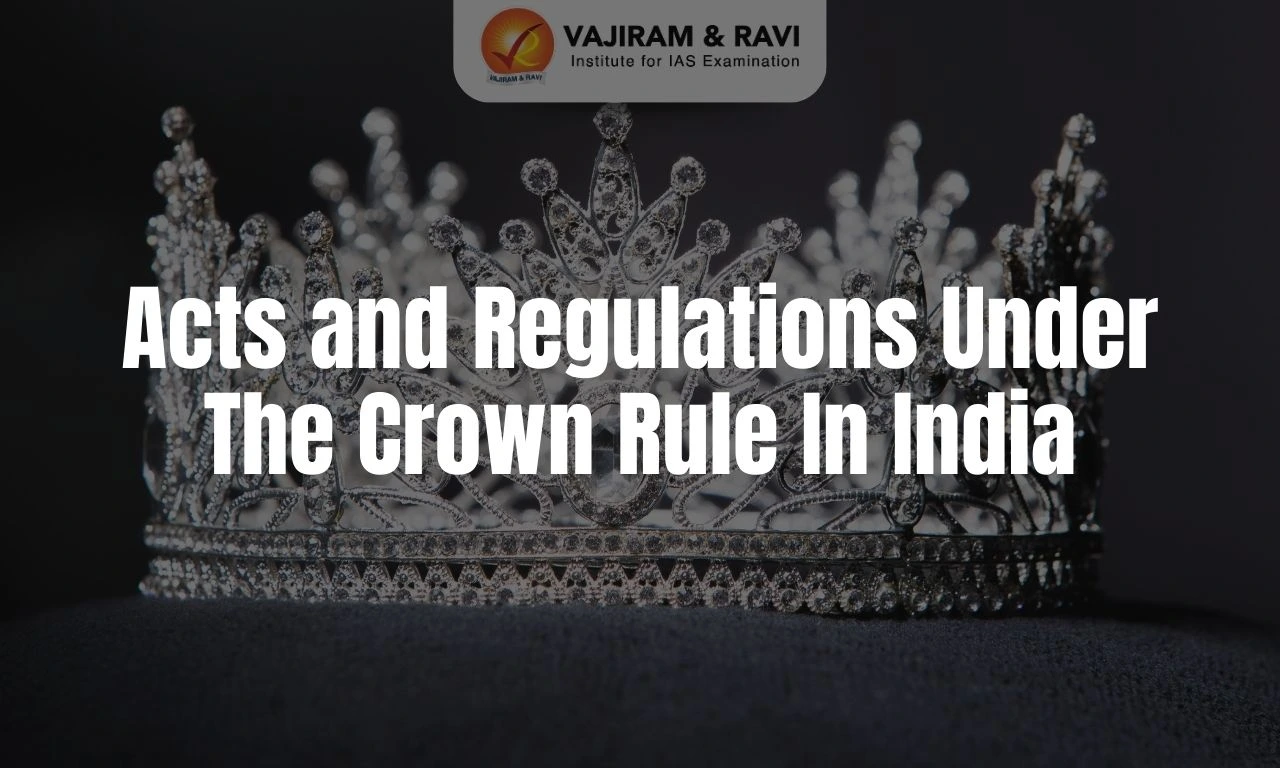The National Offshore Wind Energy Policy 2015 aims to increase the utilization of the offshore wind energy potential of India. The National Offshore Wind Energy Policy was notified by the Ministry of New & Renewable Energy in 2015. The Policy seeks to develop offshore wind energy systematically, overcome existing barriers, and build technological and implementation capabilities in the country.
With the implementation of the National Offshore Wind Energy Policy, the Government of India has committed to creating a favorable environment for the development of offshore wind energy.
National Offshore Wind Energy Policy Overview
National Offshore Wind Energy Policy was announced in India in 2015 to encourage the growth of offshore wind energy. The policy aims to use the country's coastline to generate renewable energy. It covers offshore wind energy development, establishment of offshore wind power projects and research & development activities in waters within or near the country up to 200 nautical miles from the baseline.
National Offshore Wind Energy Policy Background
Wind Energy is a cost-effective, sustainable, and proven renewable energy solution for meeting increasing electricity demands. India has achieved significant success in onshore wind power development, with 24 GW of capacity installed and generating power.
However, the same is not true for offshore wind power. The government is now attempting to replicate this success through the National Offshore Wind Energy Policy.
National Offshore Wind Energy Policy Developments in India
Preliminary assessments along India's coastline suggest potential for developing offshore wind power. Wind resource data for the coastlines of Rameshwaram and Kanyakumari in Tamil Nadu and Gujarat Coast indicate potential. A preliminary assessment suggests the possibility of establishing 1 GW wind farms along the coastlines of Rameshwaram and Kanyakumari in Tamil Nadu.
National Offshore Wind Energy Policy Objectives
The objectives of National Offshore Wind Energy Policy include promoting investment in infrastructure, achieving energy security, reducing carbon emissions, indigenization of technology, etc. The objectives are mentioned in detail below:
- Deployment of Wind Farms: The goal is to promote the deployment of offshore wind farms in the country's Exclusive Economic Zone (EEZ), including public-private partnerships.
- Investment in Infrastructure: Promote investment in energy infrastructure.
- Spatial Planning: To promote spatial planning and management of maritime renewable energy resources in the country's Exclusive Economic Zone through appropriate incentives.
- Environment-Friendly Approach: To achieve energy security and reduce carbon emissions.
- Indigenization of Technology: Encourage the indigenization of offshore wind energy technology.
- Research and Development: Promote research and development in the offshore wind energy sector.
- Skilled Manpower Creation: To increase skilled labour and employment in the offshore wind energy sector.
- Coastal Infrastructure Development: Develop coastal infrastructure and supply chain to support construction, fabrication, and maintenance activities.

National Offshore Wind Energy Policy Provisions
The Provisions of National Offshore Wind Energy Policy include the appointment of a nodal agency, facilitation in clearances, studies & surveys, capacity building, etc. The details are discussed below:
- Nodal Ministry: The Ministry of New and Renewable Energy (MNRE) will be the Nodal Ministry for Offshore Wind Energy Development in India, as well as one of the government entities responsible for the development and use of maritime space within the country's Exclusive Economic Zone (EEZ).
- Nodal Agency: The National Institute of Wind Energy (NIWE) will be the country's nodal agency for offshore wind energy development.
- Facilitation in Clearances: NIWE will process clearance/No Objection Certificate (NOC) applications from project developers and coordinate with relevant Ministries/Departments. NIWE will only facilitate obtaining clearances/NOCs; applications will be handled entirely by the relevant parties.
- Studies & Surveys: NIWE will conduct preliminary wind resource assessments, oceanography, and bathymetric surveys to demarcate offshore wind energy blocks. Government agencies will collect seabed and resource data, and private companies with expertise in offshore studies and surveys may be granted permission to collect data and share ownership on an individual basis.
- Allocation of Blocks: The blocks will be offered through an open International Competitive Bidding (ICB) process.
- Monitoring: The Offshore Wind Energy Steering Committee (OWESC), chaired by the Secretary of MNRE, will oversee the country's offshore wind energy developments.
- Incentives: Foreign Direct Investment (FDI), public-private partnerships, and international collaborations are all examples of fiscal incentives that may encourage offshore wind energy development.
- Capacity Building: NIWE will organize workshops and symposiums to raise awareness among local wind turbine and component manufacturers, as well as potential investors, to promote offshore wind energy development.
- Technology: MNRE established the NIWE as an autonomous research & development institution tasked with testing and verifying test reports for complete wind turbine generator systems, as well as providing similar services for offshore wind turbine models.
National Offshore Wind Energy Policy Challenges
National offshore wind energy development faces several challenges, which include high initial costs, financial constraints, issues in turbine installation, environmental issues, etc. The challenges are discussed in detail below:
-
- High Initial Cost: Offshore wind projects are significantly more expensive to build and maintain compared to onshore wind projects due to the need for specialized vessels, underwater infrastructure, and foundation installations.
- Financial Constraints: Securing funding for large offshore wind projects can be challenging due to their high capital requirements and longer payback periods.
- Turbine installation: Offshore turbine installation faces challenges such as deep submarine trenches, massive boulders, harsh weather conditions, and remote locations for maintenance and installation.
- Grid integration: Integrating the Offshore wind projects to the onshore national grid requires expensive undersea cabling and the development of transmission infrastructure.
- Supply Chain issues: The rising global demand for offshore wind power strains the supply chain, particularly for components such as submarine cables.
- About 75% of offshore wind insurance claims are linked to cable issues.
- Environmental Issues: Offshore wind projects may also threaten pristine marine life and their natural habitat. Maintaining a balance between offshore wind power development and environment conservation remains a challenge.
National Offshore Wind Energy Policy Way Forward
National Offshore Wind Energy Policy provides India with an opportunity to stimulate the expansion of offshore wind energy within the country. However, addressing financial viability, comprehensive resource mapping of India’s coastline and overcoming complex logistical & regulatory challenges will be critical to propelling India's offshore wind sector forward.
Thus, the role of the National Offshore Wind Energy Policy is not only to guide offshore wind energy development but also to contribute to the ambitious goal of 500 GW of renewable energy capacity by 2030, of which 140 GW will come from wind power.
National Offshore Wind Energy Policy UPSC PYQs
Q.1 Examine the potential of wind energy in India and explain the reasons for their limited spatial spread. (UPSC Mains 2022)
Q.2 Do you think India will meet 50 percent of its energy needs from renewable energy by 2030? Justify your answer. How will the shift of subsidies from fossil fuels to renewables help achieve the above objective? Explain. (UPSC Mains 2022)
Q.3 “Access to affordable, reliable, sustainable and modern energy is the sine qua non to achieve Sustainable Development Goals (SDGs)”. Comment on the progress made in India in this regard. (UPSC Mains 2018)
Last updated on December, 2025
→ Check out the latest UPSC Syllabus 2026 here.
→ Join Vajiram & Ravi’s Interview Guidance Programme for expert help to crack your final UPSC stage.
→ UPSC Mains Result 2025 is now out.
→ UPSC Notification 2026 is scheduled to be released on January 14, 2026.
→ UPSC Calendar 2026 is released on 15th May, 2025.
→ The UPSC Vacancy 2025 were released 1129, out of which 979 were for UPSC CSE and remaining 150 are for UPSC IFoS.
→ UPSC Prelims 2026 will be conducted on 24th May, 2026 & UPSC Mains 2026 will be conducted on 21st August 2026.
→ The UPSC Selection Process is of 3 stages-Prelims, Mains and Interview.
→ UPSC Result 2024 is released with latest UPSC Marksheet 2024. Check Now!
→ UPSC Prelims Result 2025 is out now for the CSE held on 25 May 2025.
→ UPSC Toppers List 2024 is released now. Shakti Dubey is UPSC AIR 1 2024 Topper.
→ UPSC Prelims Question Paper 2025 and Unofficial Prelims Answer Key 2025 are available now.
→ UPSC Mains Question Paper 2025 is out for Essay, GS 1, 2, 3 & GS 4.
→ UPSC Mains Indian Language Question Paper 2025 is now out.
→ UPSC Mains Optional Question Paper 2025 is now out.
→ Also check Best IAS Coaching in Delhi
National Offshore Wind Energy Policy FAQs
Q1. What is national offshore wind energy policy?+
Q2. What do you mean by wind energy?+
Q3. What is the policy of wind energy in India?+
Q4. What is the target of offshore wind energy?+
Q5. Which is the largest offshore wind farm in India?+
Tags: Coastal Infrastructure Development GS-3 Marine Conservation Renewable Energy Sources sustainable development goals wind energy

















